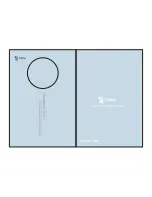
To add playlist items
- position the cursor on the second-from-left column at the vertical
position where you want to insert, and then press OK/ENTER. To add an item at the end of
the playlist, position the cursor in the "<empty>" slot and press OK/ENTER. A list will pop up
showing the available media files and items that can be inserted.
To delete playlist items
- click the 'X' in the far right column to delete an item.
To rearrange playlist items
- use the '/\' and '\/' buttons to move playlist items up and down in
the list.
To change the duration of an image or delay item
- position the cursor in the third column and
press OK/ENTER
To assign a key trigger
- position the cursor over the trigger value, and press OK/ENTER to
bring up a menu, or just press the key or MIDI note that you'd like to assign.
SYNCHRONIZED REMOTE CONTROL COMMANDS
When operating synchronized players, remote control and keyboard commands that affect
playback are retransmitted to all synchronized players. These command include the pause/play
toggle (OK/ENTER), skipping forward and back (arrow buttons), and playlist triggers. Note that
when playlist triggers are transmitted to the other synchronized players, the actual key or
MIDI note is not transmitted. Instead, it sends the playlist index of the trigger.
THE SYSTEM OPTIONS MENU
This menu is for fine tuning and troubleshooting and probably should not need to be adjusted.
Sync timing
- offset for sync timing, typically used when playing synchronized video across
different kinds of monitors that have varied display lag. The default value is zero.
Sync trigger delay
- this controls the delay when triggering playlist items with synchronization.
Because it takes an unpredictable amount of time to communicate with the other players and
load the videos, it is necessary to have some delay. The default value is 2 seconds, but it can
be set longer if your videos are not loading fast enough. It is also possible to set the delay to 1
second, but it may be less reliable. When sync is off, this value will not be used and media will
be loaded as fast as possible. [NOTE: that last part is not yet true, but "faster triggering when
sync is off" will be completed soon and activated in an upcoming software update.]
Vsync lock
- this setting determines how vertical sync timing is adjusted. Some monitors don't
respond well to video timing adjustments and lose sync, in which case you may set this value
to off or to the gentle mode which reduces the severity of timing adjustments. With vsync lock
turned off, the sync accuracy will be plus or minus half the duration of a frame (+/- 8.3ms at
60hz), which is still accurate enough for many applications. It is rare though that this setting
will need to be changed. There is also aggressive vsync mode which synchronizes vertical sync
faster but is more likely to cause visual distortion when it is first locking.
Refresh rate
- normally the player will synchronize to your monitor's default refresh rate, but
this control makes it possible to automatically change the monitor refresh rate to match the
playing video. In most cases it will probably be preferable to have this off since it will cause the
monitor to resync when new videos are loaded, but it may be useful for playing back some
kinds of videos with great accuracy at legacy framerates like 29.97fps and 24fps. [NOTE: this
feature is not yet completed but will be activated in an upcoming software update.]
VIDEO WALL MODE
Video wall mode makes it possible play a single video spread out across multiple screens
without having to edit the video into cropped segments for each screen. To use this feature,
put the same video on the USB stick of each player and turn on video wall mode in its menu,
which is available through a button in the Advanced Options Menu.






























